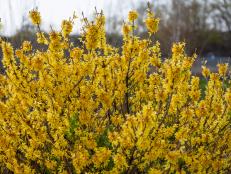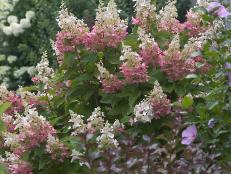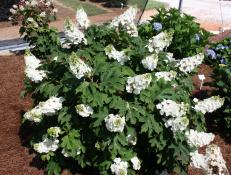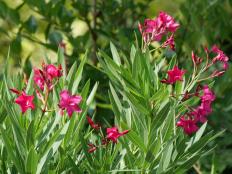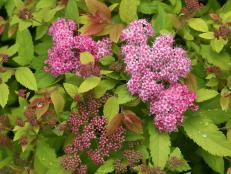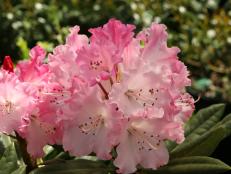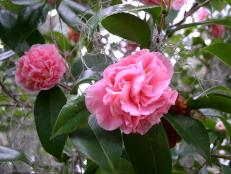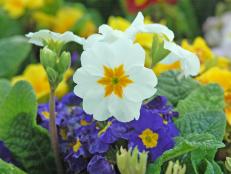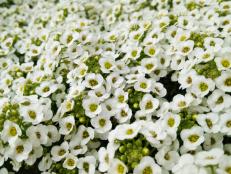How to Grow Mountain Laurel
This showy, shade-loving shrub lights up the spring landscape with trusses of gorgeous flowers.

Mountain laurel is an elegant shrub that lights up spring landscapes with rafts of showy blooms atop shiny green leaves.
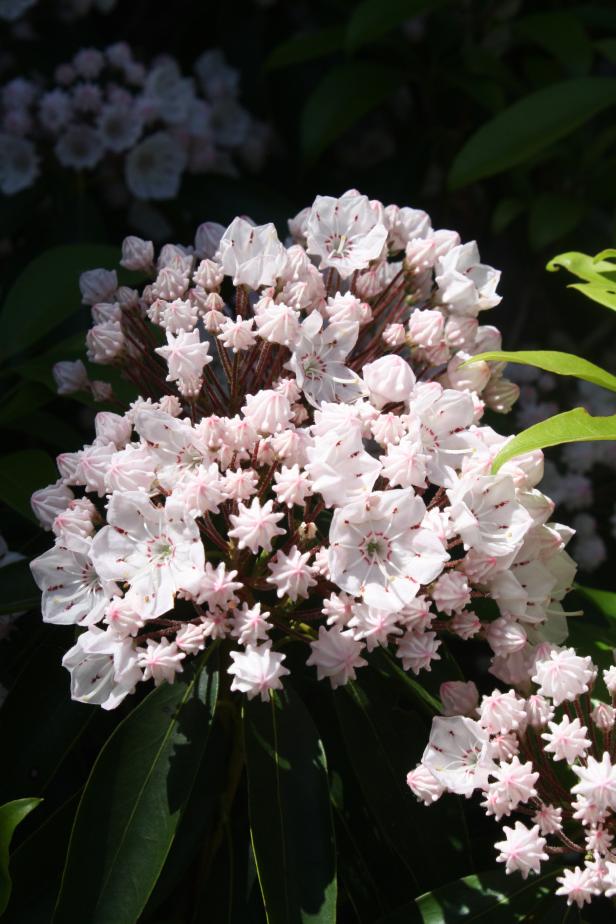
Native to the woodlands of eastern North America from New England to the Florida panhandle, mountain laurel looks like a lot like its close kin, rhododendron. It shares rhododendron's love for acidic soil, shade, and cool, moist air.
20 Tall Shrubs for Shade Gardens 20 Photos
Count on shrubs like mountain laurel to add height to planting areas in the shade. This collection of shade-loving shrubs includes heirloom bloomers, native plants and lots of low-maintenance gems.
And like its cousin, it can be challenging to grow. Some types of mountain laurels thrive in hot, humid climates, while others are only happy in cooler climates. How well your mountain laurel does will depend on whether you choose the right variety for your area.
Mountain laurels look great in mass plantings in woodland gardens, shady borders or as foundation plants. They're a good choice for naturalizing a landscape, too. Most mountain laurels are giant shrubs, growing to 15 feet tall and wide, so they need a lot of space. But some dwarf varieties stay less than 3 feet tall and fit in smaller yards and gardens.
Botanical Name: Kalmia latifolia
Common Name: Mountain Laurel
Hardiness Zones: 5 to 9
Bloom Time: Late spring
Planting and Caring for Mountain Laurel
Plant mountain laurels from the early spring to summer.
Pick a good-sized plant from a nursery. Mountain laurel is a slow grower, adding just a foot a year, so you'll have to wait a long time for a mature plant if you go with a tiny starter shrub.
Mountain laurel needs cool, well-drained soil. They're prone to root rot if planted in heavy soil. If you have clay soil, add compost or other organic material when you plant the mountain laurel to improve drainage. Another way to improve drainage: Plant in raised beds or planters.
It needs acidic soil. Mountain laurel thrives in soil with a pH of 5 to 5.5. You can amend your soil at time of planting to adjust the pH. And you can keep soil acidic by mulching around the base of the mountain laurel with pine straw or wood chips.
Plant in a spot that gets light shade. Mountain laurel will tolerate full sun, but they do best with less light. The perfect spot gets dappled light, no more than four hours of sun a day.
Don't bury the crown. The crown is the part of the shrub where the roots meet the trunk. Make sure the crown is level with the surface of the surrounding soil, not covered with dirt. Plant the shrub too deeply and it will rot and die.
Water regularly until the shrub is established. It usually takes one to two years for the mountain laurel to be able to live on the rainfall alone. Once established, mountain laurel is pretty drought tolerant, as long as its soil remains shaded.
Feed the shrubs in the spring. Use a plant food formulated for acid-loving plants, such as azalea or rhododendron fertilizer. You'll get more flowers if you fertilize.
Prune lightly immediately after blooming to keep the shrub full and healthy. Mountain laurel blooms on old wood, so if you prune too late in the season you won't get blooms the following spring. And remember, this is a slow-growing shrub, so prune lightly. Do a drastic cut and it may take a decade for your mountain laurel to grow back.
Mountain Laurel Pests and Diseases
Mountain laurel is vulnerable to fungal diseases like leaf spot and blights. It's also susceptible to insects like borers, whiteflies and lace bugs.
In heavy, clay soils, mountain laurel can get root rot. There's no cure for root rot. The only solution is to dig up the plant, toss it in the compost pile and start over with a new mountain laurel.
Is Mountain Laurel Toxic?
Yes. Every part of the plant — stems, leaves and blooms — contains chemicals that are harmful to animals and people. Even honey made by bees from the pollen of mountain laurel can be toxic. If you have pets or small children that might eat plants, you may want to reconsider planting mountain laurels in your yard.
Recommended Mountain Laurel Varieties
There are many types of mountain laurel, ranging from giants that reach 20 feet or higher to dwarfs that stay under 3 feet tall. Here are some of our favorites.
'Elf' is dwarf mountain laurel with large, pink buds that turn almost white when they open. Elf grows to 3 feet tall and 4 feet wide.
'Minuet' is another dwarf variety. This one has light pink flowers with a bold red band. It grows 3 feet tall.
'Olympic Fire' grows to a sprawling 10 feet tall and wide. It has red-pink buds that open to dark pink flowers.
'Snowdrift' produces gorgeous white flowers on shiny, deep green foliage. Shrubs grow to an impressive 10 feet tall and 10 feet wide, making this a good choice for a spot where you want a tree-sized shrub.







